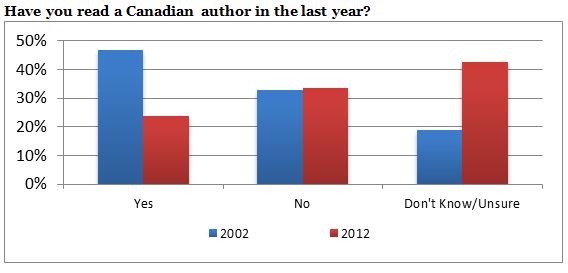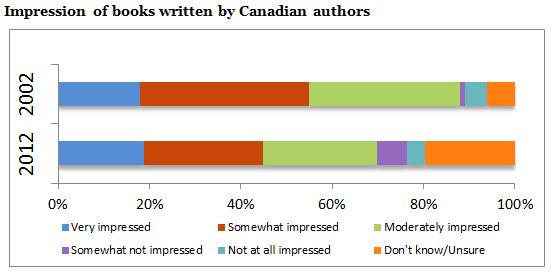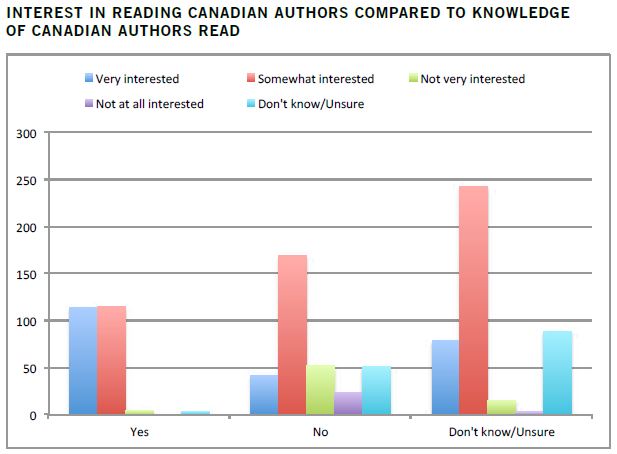What do Life of Pi, Scott Pilgrim vs. the World, Water for Elephants and Barney’s Version have in common? Aside from being some of the more popular movies to come out in the last few years, they are also all based on novels written by—wait for it—Canadians.
When I’m not working as the research intern for BookNet, I can be found moonlighting as a server in a restaurant located near a multiplex theatre. Over the last few years there have been a few movie adaptations from Canadian novels, and whenever someone mentioned that they were seeing one of these films I immediately turned a walking PSA for Canadian books: “Oh, did you know that was based on a novel by a Canadian author?” Now, I didn’t keep a running tally, but I can tell you that the majority of people I talked to had no clue.
One of the first projects that landed on my plate at BookNet was compiling data for the mini study, Canadians Reading Canadians, and the first thing I confirmed was that my hypothesis was true: Canadians know very little about Canadian books.
We Know Less Now Than We Did Before
We compared our 2012 results to that of a study conducted in 2002 by the Association of Canadian Publishers. One of the first questions asked of participants was whether or not they had read a Canadian authored book in the last year. The results weren’t pretty.
Those who responded that they had read a Canadian book have decreased from 41% in 2002 to 24% in 2012. But you can see from the graph that the bulk of the change is likely a result of uncertainty as to what people are reading.
Making an Impression
My first thought was that Canadian books weren’t making the same impression they once did, and as a result, people’s perceptions were changing towards Canadian writing. But that didn’t seem to be the case. In fact, when participants were polled about their views of Canadian authored books, positive impressions had only decreased slightly, pointing once again to an increase in uncertainty rather than overall declining opinion of writing quality.
Do Canadians Even Care?
My next thought, though I hated to think it, was that maybe consumers didn’t care about whether or not what they were reading was Canadian. Thankfully, that didn’t seem to be the issue. When we cross tabulated whether or not a participant had read a Canadian book with a scale of how interested they were in reading Canadian books, the results were reassuring.
People were interested; they just didn’t seem to know what they were reading. For those who had read a Canadian book, the overwhelming majority replied that they were somewhat to very interested in Canadian content. Even a chunk of people who hadn’t read a Canadian book expressed interest in reading one.
The biggest difference was seen in those who had responded with uncertainty as to what they had read. The majority of these participants expressed being somewhat interested in Canadian content. So what seems to be missing isn’t an interest or a desire to consume Canadian literature, it’s knowledge and awareness of who our homegrown talent are and where to find them.
How Will the End Consumer Know?
Our challenge to publishers has been to include the Canadian identifier in their ONIX fields; and to their credit there has been an increase of 53% from April 2011. But the real challenge is how publishers and booksellers signal Canadian content to the end consumer.
Amazon, Kobo and Indigo have spaces in their book sections devoted to Canadian books, but neither are highly prominent. They also Canadian book filters in their advanced search or visual cues when you’re looking at a Canadian book. Some publisher websites fare better, but not all. And in most bookstores are stocked by category—and don’t get me wrong, that makes the best sense.
So the average consumer might be missing something at the merchandising level. Maybe there’s more that could be done in terms of packaging and data. Perhaps Canadian-ness could be highlighted more prominently in book descriptions or author bios. We need to think of how to better signal to consumers when we’ve got Canadian content because, as I’ve shown above, there is a thirst for Canadian content, and it can be quenched if we show people where to find it.
For more information on how Canadians are consuming Canadian content check out the full study, Canadians Reading Canadians.





